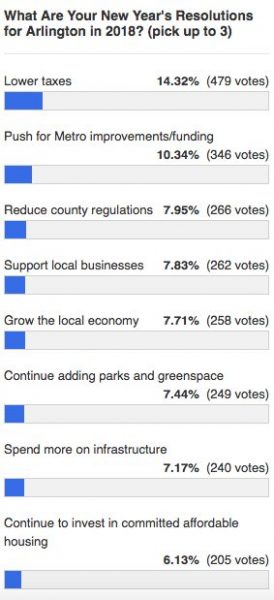Peter’s Take is a weekly opinion column. The views and opinions expressed in this column are those of the author and do not necessarily reflect the views of ARLnow.com.
Virginia Medicaid expansion is the top 2018 legislative priority for Virginia Democrats. Since Democrats lack a majority in both legislative branches, they must make a deal with Virginia Republicans to expand Medicaid.
Discussion
Prospects for such a deal have improved significantly in the House of Delegates (HOD). But, the Senate budget bill is disappointing.
Last Thursday, Delegate Terry Kilgore (R-Scott), chairman of the HOD Commerce and Labor Committee:
“said his struggling coal-country district would get the ‘hand up’ it desperately needs if more uninsured Virginians were made eligible for the federal-state health-care program.”
Kilgore also suggested other HOD Republicans are ready to join him:
“‘I’m not that far out on a limb. We have to step up, we can’t be the party of ‘no,”said Kilgore. He said at least 15 Republican House delegates will likely vote with him on the issue.”
Virginia Democratic Governor Ralph Northam welcomed Kilgore’s announcement:
“Governor Northam thanks Delegate Kilgore for sharing his ideas about how to expand health coverage for Virginians who need it… He is encouraged by discussions with members of both parties on this important issue and believes we can reach an agreement that works for everyone.”
This past Sunday, the firewall against Medicaid expansion fell further in the HOD under a budget plan
“that would accept $3.2 billion in federal money to pay for 90 percent of the cost of expanding the program on Jan. 1, 2019 [to 300,000 Virginians], while relying on a new ‘provider assessment’ on hospital revenues to cover the state’s share of the cost of health coverage for currently uninsured Virginians whose care is uncompensated.”
It’s useful to review the conditions and limitations which some HOD Republicans now are advancing as the price of their support for Medicaid expansion:
“Kilgore said work requirements like those the Trump administration has allowed Kentucky to impose, coupled with a mandate that recipients contribute a ‘small co-pay,’ would make for ‘a conservative approach’ to expansion.”
Would most Democrats prefer no work requirements–even for “able-bodied adults”? Absolutely. But, if Democrats rigidly insist on what I agree is a much more humane approach, the most likely outcome is no Medicaid expansion at all.
Democrats will have to choose between an unattainable (in this legislature, this year) ideal, or a significant increase in the numbers of low income Virginians who get health insurance. We should put people’s needs first.
The HOD budget proposal on Medicaid expansion sets up a potential showdown with the Virginia Senate. It’s Finance Committee has said “it will not include full Medicaid expansion in the budget.”
This Finance Committee proposal would extend coverage to an additional 20,000 low-income people with mental illness, addiction or chronic disease–compared to the 300,000 who would be covered under the HOD budget plan. But, the Senate proposal lacks any financing mechanism.
Conclusion
Democrats’ long-term goal must continue to be full Medicaid expansion. But overriding that goal, we must help people who are dying, or who are much sicker than they need to be because of untreated illnesses.
Even with its significant flaws, the HOD budget bill represents the high-water mark for Medicaid expansion in this legislative session. Democrats should now focus on a legislative strategy to convince key Republican state senators to adopt the approach of HOD Republicans who support Medicaid expansion.





